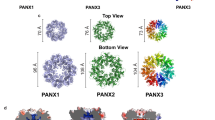Abstract
STUDIES of species differences in red cell phosphatides1 have led to a re-examination of the problem of standardizing the method of preparing erythrocyte membranes (‘ghosts’, post-hæmolytic residues). It seems essential that if results obtained with physical methods, for example, electron microscopy, are to be correlated with those obtained by chemical analysis, greater uniformity of procedure for preparation of membranes must be sought. The matter has received little recent attention. In what was perhaps the first chemical analysis of the structural protein, stromatin, Jorpes2 found his preparations to contain irregular amounts of hæmoglobin, representing 10–30 per cent of the dry weight. Not long afterwards, Adams3 offered spectroscopic evidence for the idea that in the intact cell hæmoglobin is combined with stromatin. Keilin and Hartree4, however, were able to show that the finding was explained by the peculiar optical properties of the medium and could not be regarded as an indication of a hæmoglobin–stromatin complex. Since that time the blood-pigment found attached to ‘ghosts’ has come to be regarded, or, at any rate, treated, as a sort of contaminant the physical association of which with the membrane proper interferes with obtaining satisfactory material for analysis of other things. Various methods have been devised for preparing ‘ghosts’, one of which5 claims to reduce the iron content to the vanishing point (<0.01 per cent hæmoglobin). It is difficult to find information about the stage in the processing at which the intact membranes begin to break up, or, indeed, what the microscopic appearance of the final product is. Usually, the recommended techniques introduce acid or salt washing at some point to expedite the removal of hæmoglobin—measures which in our hands have led to prompt disintegration of ‘ghosts’, as shown by microscopic examination.
This is a preview of subscription content, access via your institution
Access options
Subscribe to this journal
Receive 51 print issues and online access
$199.00 per year
only $3.90 per issue
Buy this article
- Purchase on Springer Link
- Instant access to full article PDF
Prices may be subject to local taxes which are calculated during checkout
Similar content being viewed by others
References
Turner, J. C., Anderson, Helen M., and Gandal, C. P., Biochim. Biophys. Acta, 30, 130 (1958).
Jorpes, E., Biochem. J., 26, 1488 (1932).
Adams, G. A., Biochem. J., 32, 646 (1938).
Keilin, D., and Hartree, E. F., Nature, 148, 75 (1941).
Parpart, A. K., J. Cell. and Comp. Physiol., 19, 248 (1942).
Steinhardt, J., J. Biol. Chem., 123, 543 (1938).
Author information
Authors and Affiliations
Rights and permissions
About this article
Cite this article
ANDERSON, H., TURNER, J. Preparation and the Hæmoglobin Content of Red Cell ‘Ghosts’. Nature 183, 112–113 (1959). https://doi.org/10.1038/183112a0
Issue Date:
DOI: https://doi.org/10.1038/183112a0
This article is cited by
-
Interaction of hemoglobin with band 3: A review
Klinische Wochenschrift (1983)
Comments
By submitting a comment you agree to abide by our Terms and Community Guidelines. If you find something abusive or that does not comply with our terms or guidelines please flag it as inappropriate.



